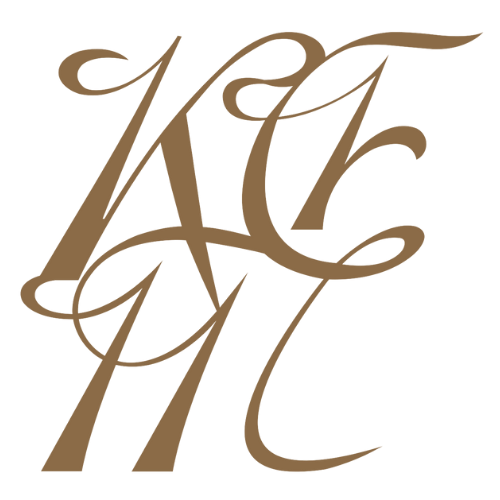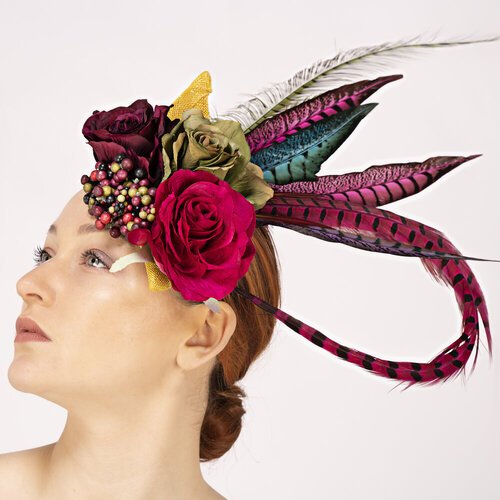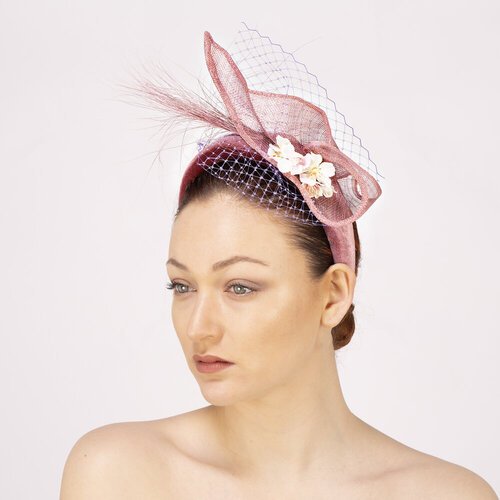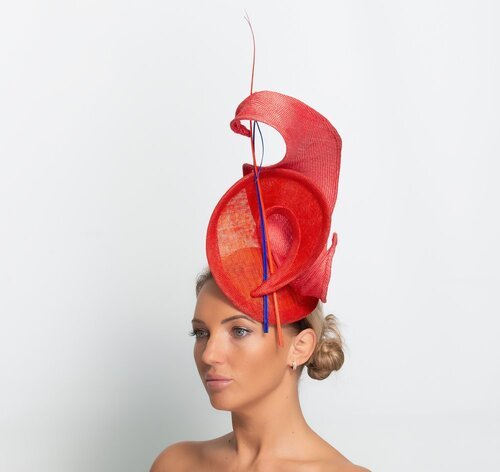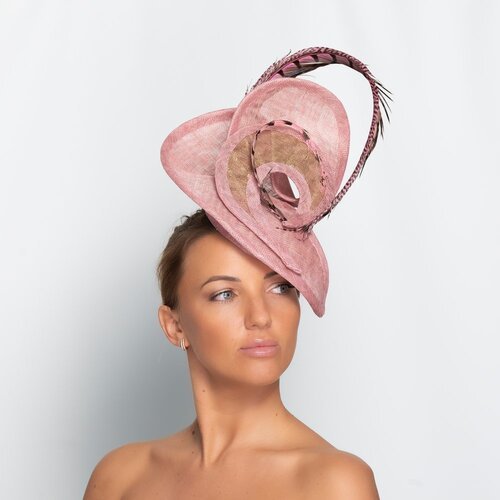Fascinated by fascinators
Many of us are dreaming of the day we can dust off our finery, don our previously unworn gorgeous fascinator and head off to that society wedding, summer soirée or cocktail party! Even though that day may be a little way off, I thought a little nod to this iconic hair accessory would be a welcome distraction. So, grab that coffee along with a slice of something yummy, relax and enjoy a potted history of the beloved fascinator….
Why are we all fascinated by fascinators? And for the uninitiated, why has this type of headwear become increasingly de rigueur? Simply put, a fascinator is a decorative, lightweight headpiece. It’s usually adorned with flowers, beads or feathers and is attached to the head by either a headband, comb or clasp. Some designers will team it with a veil to add a little drama or allure to the piece. Normally sitting at an angle on the head, the fascinator perfectly complements the look and style of the wearer’s beautifully coiffed hair. Its practicality and versatility, therefore, makes it the ‘go to’ formal hair accessory for many.
Since the dawn of time women have habitually decorated their hair with feathers, cloth, jewels, leaves, flowers and sometimes even parts of bone! And at the same time, many religious and spiritual practices across civilisations have insisted upon the covering of a female’s head. These customs and rituals evolved over the centuries. By the Renaissance period of the 15th-century merchants were selling exotic wares to fast-growing consumer markets, which in turn demanded chic accessories and fashion statement pieces. Frivolous hairpieces grew in popularity as high society made an ostentatious show of its importance and wealth.
Head fashion continued through the Tudor Period. Perceived as a status symbol, women now dressed in veils and pillbox hats intricately adorned with pearls, feathers and glass jewels. Hat and fascinator making by ‘milliners’ exploded and the skill soon became revered as an art form. Italian hat makers from Milan attained almost celebrity status!
A century later, women in Britain became overly obsessed with following French fashion (has anything really changed?) opting for the ‘fontage’, a tall, wireless headdress covered with lace and silk which nestled amongst a sea of stacked curls. This type of eye-catching headwear reached dizzy heights in France in the 18th century when Marie Antoinette opted for embellishing her hair with ‘pouf au sentiments’, an innovative way of making a statement by strategically placing miniature landscapes, gardens, and even animals within a metal frame of false hair and wool. British women responded with the ‘pompom’, a type of topknot using butterflies and jewels and fastened to both the front and side of the head. Was this the forerunner of our present-day fascinator?
During most of the 19th century, the wearing of elaborate headdresses fell firmly out of vogue as the world grappled with wars, revolutions and global recessions. But during the 1920s to 1940s, society witnessed sumptuous hair accessories and cloche hats worn by flapper girls along with miniature doll hats perfectly seated on the foreheads of post-war celebrants. The 195os however saw a decline in headwear as hats and fascinators were deemed a little fuddy-duddy.
Fast forward to the 1980s and London-based milliners like Stephen Jones and Philip Treacy started making the type of fascinators we know and love today. Still active to this day, these iconic designers continue to create jaw-dropping headpieces. Over the years Treacy has become a firm favourite of Lady Gaga, Madonna, and Sarah Jessica Parker. Often hailed as one of the greatest hat makers of all time, he is favored by British royalty. Treacy personally designed the fascinator, affectionately renamed the ‘pretzel hat’ worn by Princess Beatrice in 2011.
And as we move further into the 21st century, I would like to think that the fascinator is here to stay. It’s part of our heritage. No longer solely associated with the upper echelons of society, the fascinator is a statement piece, a true and individual expression of both freedom and personality. If you’re interested in making your own statement, why not take a look at what Katherine Elizabeth has to offer?
Katherine Elizabeth x

